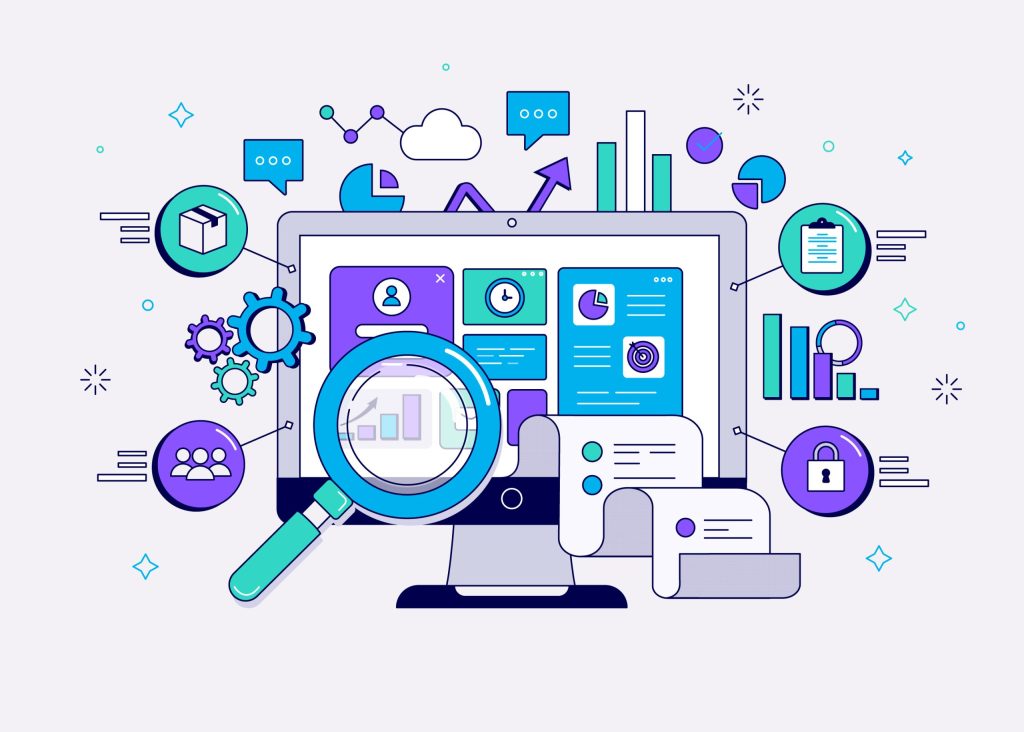
Clinical Research Software Development in 2025: Trends & Tech Stack
Table of Contents
Clinical research is at a pivotal intersection of medicine and technology. As global trials expand in complexity, scale, and regulatory scrutiny, clinical research software has evolved from a “supporting tool” into the core infrastructure powering study design, data management, safety monitoring, compliance, and patient engagement. In 2025, clinical research software development emphasizes intelligent automation, interoperability, security, patient-centricity, and cloud-native scalability. The right technology stack—modern, compliant, and performance-driven—determines not only a product’s success but also its reliability during real-world trials involving human lives and critical data.
This article explores the emerging trends in clinical research software development for 2025 and breaks down the most effective tech stack choices that align with regulatory standards, adoption needs, and future-ready digital health ecosystems.
Key Trends Driving Clinical Research Software in 2025
1. AI and Predictive Intelligence at the Core
Artificial Intelligence is no longer an experimental add-on; it has become foundational to clinical research workflows. In 2025, clinical research software incorporates:
- Predictive analytics to identify high-risk patients, forecast disease progression, and reduce delay in adverse event detection.
- Optimization algorithms for site selection, recruitment feasibility, and protocol planning.
- AI-driven study insights enabling faster statistical decision-making and real-time trial adjustments.
- Machine learning for patient phenotyping, stratification, and outcome prediction.
These advances help sponsors and clinical teams make data-led decisions even before trials reach critical intervention stages—improving accuracy, efficiency, and eventual trial outcomes.
2. Real-Time Patient Monitoring & Decentralized Trials
Post-pandemic digital transformation popularized decentralized clinical trials (DCTs), and by 2025, they mature into mainstream infrastructure. Clinical research software now embeds:
- Remote patient monitoring (RPM) via IoT and wearable device connectivity.
- Teleclinical data capture outside traditional trial sites.
- AI-supported anomaly detection from continuous data streams.
- Digital twins & patient simulation models for testing interventions virtually before human trials.
This hybrid approach reduces patient burden, improves retention, and expands demographic accessibility, especially for rural and mobility-restricted populations.
3. Regulatory-First Engineering
Compliance shapes software architecture from day one. Clinical research systems must satisfy strict validation and security standards, including:
- Electronic record authenticity & audit traceability.
- Digital signature validation and non-repudiation.
- Secure storage of patient-identifiable data.
- Tamper-proof audit logs.
By regulation, US-based software used in human clinical studies must meet FDA’s electronic record rule 21 CFR Part 11 guidelines.
Thus, security engineering firms and healthcare startups now adopt compliance by design, supported by automated validation pipelines and built-in audit trails.
4. Interoperability and Healthcare Data Standards
The demand for seamless health data exchange grows stronger. In 2025, clinical research software prioritizes:
- FHIR-based interoperability for academic institutions, pharma, CROs, and EHR integrations.
- Real-world evidence (RWE) is ingested from hospitals, health networks, labs, insurance data, and pharmacy systems.
- API-driven modular products enabling organizations to plug research modules into existing digital health infrastructure.
Interoperability reduces duplicate data entry, improves study accuracy, accelerates trial cycles, and helps create unified regulatory submissions.
5. Patient-Centric UX & Engagement Design
Software adoption in trials is only as strong as usability. In 2025, successful clinical research systems include:
- Mobile participant dashboards for tracking appointments, medication, symptom logs, reminders, data submission, consent updates, and engagement education.
- Simplified e-consent flows using multimedia explanations, assisted language support, and accessibility-optimized interfaces.
- Gamified adherence tools for higher patient retention and fewer missing data instances.
When research participants and clinical professionals both benefit from friction-free interfaces, overall data completeness and trial credibility improve sharply.
6. Cybersecurity, Privacy & Data Governance Evolution
Rising cyber threats make healthcare one of the most regulated and protected digital sectors. Clinical research software solutions embed:
- End-to-end encryption (E2EE)
- Role-based access control (RBAC)
- Multi-factor authentication (MFA)
- Device enrollment & secure session segmentation
- Patient data residency governance across regions
- Advanced breach monitoring & incident response pipelines
Security is particularly critical because software used in research may aggregate data across countries, sites, hospitals, labs, and patient populations.
7. Cloud-Native Scaling & Edge-Compatible Architecture
Modern trials generate huge data volume (wearables, genomic/exomic reads, image-based diagnostics, lab results, progress tracking, survey-based PROs, etc.). As a result, clinical research software supports:
- Auto-scaling microservices
- Distributed file storage
- Edge caching for low-latency data capture
- Georeplicated secure database clusters
- Multi-region deployments for trial global readiness
Without cloud-optimized software, uptime risk during multinational trials increases significantly.
Tech Stack for Clinical Research Software in 2025
A modern tech stack must support performance, scale, regulated data integrity, integration potential, and long-term extensibility. Here are the ideal components:
Frontend & UX Development
| Component | Best Fit |
| React 18+ | Modular component-driven UI, thrives in high-interaction dashboards |
| TypeScript 5+ | Type safety, reusable clinical interface modules |
| Next.js 14+ | Server-side rendering (SSR) for speed + SEO, supports secure API routes |
| Tailwind CSS / ShadCN UI | Clean UI patterns, design-consistency, rapid UI scaling |
| Progressive Web App (PWA) Support | Enables offline data capture for DCT participants |
Clinical organizations increasingly demand mobile-compatible and accessibility-optimized frontend systems. Thus, 2025 prioritizes typed, modular, component-driven UI development.
Backend & API Architecture
| Component | Best Usage |
| Node.js 20 LTS or Bun 1.0+ | High-speed backend runtimes, large research pipelines |
| Nest.js or FastAPI | Built-in modular architecture & Python-friendly ML connectivity |
| GraphQL + REST APIs | GraphQL for complex protocol querying, REST for healthcare interoperability |
| Microservices over Monoliths | Enables isolation of clinical modules (consent, recruitment, safety, data capture) |
| gRPC | High-speed internal services for low latency messaging |
Backend design in 2025 is API-first with strong modularization to support regulated clinical product growth.
Database & Secure Research Data Storage
| Database | Best For |
| PostgreSQL 16+ | Audit-friendly RDBMS, clinical relational integrity |
| MongoDB 7+ | Protocol flexibility, unstructured research modules |
| TimescaleDB | Wearables, RPM telemetry, continuous tracking data |
| Supabase Auth | HIPAA-friendly authentication module, secure user governance |
| Multi-DB Strategy | Combines structured, unstructured, and real-time datasets |
Clinical Tip: RDBMS is essential for regulated audit logs, structured records, safety reporting, and site data—but real-time telemetry works best in time-series data optimized databases.
Cloud, Infrastructure & Global Trial Deployment
| Component | Best Usage |
| AWS, GCP, or Azure | HIPAA/GxP-friendly cloud environments |
| Kubernetes 1.30+ | Orchestration of trial microservices and autoscaling |
| Docker | Containerized, reproducible clinical deployments |
| Terraform or Pulumi | Declarative, version-controlled cloud compliance |
| Edge CDN (Cloudflare/AWS CloudFront) | Improves low-latency trial participant delivery |
Infrastructure is built for multi-region secure deployments, supporting patient data residency rules, uptime reliability, and auto-scaling research pipelines.
AI, ML & Data Science Stack
| Component | Use Case |
| Python 3.12+ | ML pipelines, recruitment prediction, data validation, RWE ingestion |
| TensorFlow 2.16+ or PyTorch 2.3+ | Deep learning models for patient analytics |
| Scikit-learn 1.6+ | Predictive models, protocol outcome pattern segmentation |
| LangChain / LLM Integration | Assisted medical narrative processing, summarization, and consent generation |
| MLflow | Regulated model tracking, versioning, and reproducible ML audit trails |
AI models are not black-box add-ons. Model observability and audit readiness pipelines are now required for regulatory acceptance.
Security & Compliance Stack
| Component | Purpose |
| AES-256 & TLS 1.3 | Encrypt data in transit and at rest |
| RBAC & ABAC | Clinical role segmentation for access control |
| HIPAA / GxP mode warfare | Secure compliance pipelines |
| GDPR-ready data governance design | For multinational RWE data |
| OpenTelemetry + SIEM pipelines | Audit monitoring & threat detection pipeline |
Security architecture is no longer optional for compliance-heavy platforms. 2025 uses regulation-led security infrastructure by design.
How These Trends & Stack Choices Translate to Real Value
| 2025 Focus | Practical Outcome |
| AI-driven recruitment predictions | Fewer recruitment failures and delays |
| Teleclinical data capture | Higher patient retention |
| Cloud-autoscaling microservices | Near-100% trial uptime |
| FHIR interoperability | Faster submissions |
| Audit & compliance by default | Regulatory credibility |
| Patient-centric mobile UX | Lower missing data |
Clinical research software built without these pillars risks trial delays, cost overrun, compliance failure, low adoption, cybersecurity vulnerabilities, or unreliable product infrastructure.
Also Read: Latent Healthcare Software Company Roadmap: From Hidden Idea to Real-World Impact
Closing Outlook
Clinical research software development in 2025 is not just about managing trial data—it’s about ensuring reliability across human participants, global sites, clinical workflows, validations, compliance submissions, recruitment intelligence, participant engagement, cyber protection, cloud scaling, and secure interoperability. With emerging AI capabilities, decentralized data capture, regulatory-first engineering and interoperable APIs, 2025 is the year clinical research software becomes the silent engine powering future medicine.

